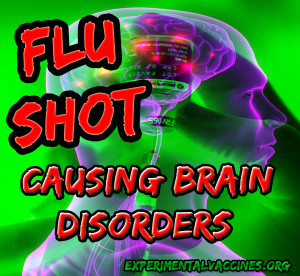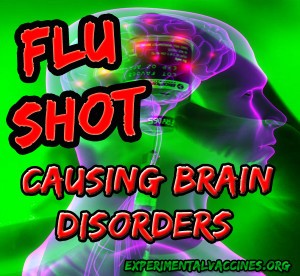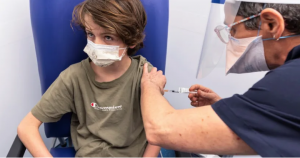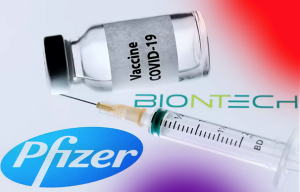Influenza vaccination and Guillain Barre syndrome


Abstract
Acute and severe Guillain Barre Syndrome (GBS) cases reported following influenza vaccine to the Vaccine Adverse Events Reporting System (VAERS) database from 1991 through 1999 were examined. Endotoxin concentrations were measured using the Limulus amebocyte lysate assay in influenza vaccines. There were a total of 382 cases of GBS reported to the VAERS database following influenza vaccination (male/female ratio, 1.2). The median onset of GBS following influenza vaccine was 12 days (interquartile range, 7 days to 21 days). There was an increased risk of acute GBS (relative risk, 4.3; 95% confidence interval, 3.0 to 6.4) and severe GBS (relative risk, 8.5; 95% confidence interval, 3.7 to 18.9) in comparison to an adult tetanus–diphtheria (Td) vaccine control group. There were maximums in the incidence of GBS following influenza vaccine that occurred approximately every third year (1993, 1996, and 1998) and statistically significant variation in the incidence of GBS among different influenza manufacturers. Influenza vaccines contained from a 125- to a 1250-fold increase in endotoxin concentrations in comparison to an adult Td vaccine control and endotoxin concentrations varied up to 10-fold among different lots and manufacturers of influenza vaccine. The biologic mechanism for GBS following influenza vaccine may involve the synergistic effects of endotoxin and vaccine-induced autoimmunity. There were minimal potential reporting biases in the data reported to the VAERS database in this study. Patients should make an informed consent decision on whether to take this optional vaccine based upon its safety and efficacy and physicians should vigilantly report GBS following influenza vaccination to the VAERS in the United States so that continued evaluation of the safety of influenza vaccine may be undertaken.
Introduction
Influenza vaccine is administered annually during the fall season in areas having a temperate climate. The composi- tion of the subvirion influenza vaccine includes two type A antigens and one type B antigen of influenza virus. Because antigenic drift variants are responsible for annual epidemics that occur during the interpandemic periods, distinct, anti- genic variant strains of influenza A and B emerge and become predominant over a period of approximately 2 to 5
? Acknowledgment/disclosure: Drs. Mark R. Geier, David A Geier, and Arthur C. Zahalsky have served as expert witnesses and as consultants involving vaccine adverse reactions before the National Vaccine Injury Compensation Program (NVICP) and in civil litigation.
* Corresponding author. Fax: ?1-301-989-1543. E-mail address: [email protected] (M.R. Geier).
years, only to be replaced by the next predominant antigenic variants [1,2]. Currently, influenza vaccine is recommended for persons 65 years and older, children and teenagers, pregnant women, those at high risk, such as healthcare workers, and persons who want to reduce the likelihood of contracting influenza [3].
One goal of this study was to determine whether influ- enza vaccination and Guillain Barre Syndrome (GBS) are temporally related, whether differences in the incidence rates of GBS following influenza vaccination occur annu- ally, and whether there are differences in the incidence rates of GBS following influenza vaccination manufactured by different manufacturers.
It has been previously been reported that A/New Jersey swine influenza vaccine was notable for relative risks of GBS ranging from 4.0 to 7.6 for 6- or 8-week periods after
1521-6616/03/$ – see front matter © 2003 Elsevier Science (USA). All rights reserved. doi:10.1016/S1521-6616(03)00046-9
vaccination [4 – 8]. Subsequent studies of GBS have found low relative risks of 1.4 in 1978–1979, 0.6 to 1.4 in 1979– 1980 and 1980 –1981, and 1.1 in 1980 –1988; these relative risks were not significantly different from 1 [9–11]. For the 1990–1991 influenza season an elevated risk was found among vaccinated person 18 to 64 years of age (relative risk, 3.5; 95% confidence interval, 1.5 to 6.3) [12].
Another goal is to offer an etiology for the demyelination of the peripheral nervous system in persons who were in- jected with influenza vaccine prior to the onset of GBS. Demyelination of the peripheral nerves in GBS is believed to be immune-mediated, resulting in a slowing of nerve conduction due to segmental demyelination and infiltration by mononuclear cells.
The final goal of this study was to measure the endotoxin concentrations present in commercially available influenza vaccines using the Limulus amebocyte lysate (LAL) assay. Several studies have used the LAL assay to measure the endotoxin concentrations present in commercial vaccines [13–15]. The authors of these studies concluded that the monitoring and reporting of endotoxins and other contam- inants in vaccines might be useful in understanding some of the side effects observed in vaccine recipients. They also concluded that the selection of vaccines with the lowest endotoxin levels might help to avoid some of the adverse effects of vaccinations.
Materials and methods
In this study the Vaccine Adverse Events Reporting System (VAERS) database was analyzed to determine the incidence of GBS. The VAERS database is an epidemio- logical compilation maintained by the Centers for Disease Control and Prevention (CDC) since 1990. Adverse events following vaccination are required to be reported to this database as mandated by United States law. The protocol for reporting serious events to VAERS requires written and telephonic confirmation by the CDC. The CDC follows-up on serious events 1 year after they occur to determine whether the patients had fully recovered. The Food and Drug Administration (FDA) inquires into deaths reported to the VAERS database by contacting the patient’s healthcare provider and physician. The FDA also continually monitors reports to the VAERS database to determine whether any vaccine or vaccine lot has a higher than expected incidence rate of events. The VAERS Working Group of the CDC, the FDA, and ourselves analyze and publish epidemiologic studies based upon analyses of the VAERS database. A recent study by the VAERS Working Group of the CDC stated that VAERS is simple to use, flexible by design, and the data are available in a timely fashion [16]. Our principal aim here is to compare GBS following influenza vaccination with an adult tetanus– diphtheria (Td) vaccine control group based upon analysis of the VAERS database, a massive database otherwise unattainable. The reason for choosing
Td as an adult vaccine control group is that the Institute of Medicine (IOM) of the U.S. National Academy of Sciences has concluded that the evidence favors a causal relationship between Td vaccine and GBS [17].
We examined information reported to the VAERS data- base for the period 1991 through 1999 using Microsoft Access. The Biological Surveillance Summary Reports of the CDC were used to determine the incidence of adverse reactions following vaccination. The Biological Surveil- lance Summaries noted that 401,201,061 influenza vaccina- tions were administered from 1991 through 1999. The in- cidence of GBS reported to the VAERS database following adult Td vaccination served as an adult vaccine control group, providing a maximal estimate of the background rate of GBS reported to the VAERS database. The Biological Surveillance Summaries noted that 129,293,354 Td vacci- nations were administered to adults from 1991 through 1999. We also examined the incidence of severe cases of GBS reported to the VAERS database following influenza vaccination in comparison to Td vaccination. A severe case of GBS was defined as a case of GBS in which there was only partial recovery and significant residual disability 1 year later.
We also examined the incidence of GBS reported fol- lowing influenza vaccine manufactured by Wyeth, Parke- Davis, Lederle, Connaught-Aventis Pasteur, and Evans Medical International. We used denominators obtained from the Biologic Surveillance Summaries of the CDC for the number of doses of each vaccine administered during their respective time periods. The CDC regulations require that the identities of the manufacturers remain unknown, because they claim this information is confidential and pro- prietary between themselves and the manufacturers [18]. Therefore, we have encoded the manufacturers we exam- ined by assigning each an encoding letter.
Central to our study is the premise that in a similarly aged population an unbiased search for the incidence rate of a specific adverse reaction to a particular vaccine would yield similar data to the incidence rate following another vaccine. This premise is founded on the understanding that the inherent limitations in the accuracy of reported adverse reactions in the VAERS database may be expected to equally affect the reports originating from both vaccines under study. Likewise, the number of administered doses of a particular vaccine, based on the Biological Surveillance Summaries of the CDC, should be unbiased since any in- herent limitations of the Biological Surveillance Summaries should equally apply to each vaccine under study. In per- forming the statistical analyses, the premise of equal reac- togenicity between vaccines forms the basis of our null hypothesis. The statistical method used is a 2 ? 2 contin- gency table which posits that the total number of adverse reactions following a control vaccine and the number of doses administered (based upon the Biological Surveillance Summaries for the period examined) are the expected val- ues, and the total number of adverse reactions following the









